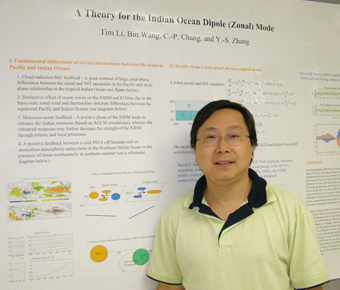

Have you ever wondered where those tropical cyclones come from, the ones that seem to appear from the middle of the ocean and pummel our shores? Until about 1990, research focused only on the track of the existing cyclones, once they were detected. But then, researchers like Professor Tim Li started to look into the genesis of the tropical cyclones – What precursor synoptic weather conditions would give rise to them? What determined their strength? Where does the cyclone actually originate? What his studies have shown is that there are several cyclone formation scenarios, which involve either the near-surface synoptic perturbations or mid-tropospheric weather signals. He also revealed the relationship between wave energy accumulation and the cyclone formation and the origin of the easterly waves. A significant difference in regional characteristics of the cyclone genesis between the western North Pacific and tropical Atlantic Ocean was discovered. Based on the dynamic and thermodynamic precursor conditions, a test of tropical cyclone genesis forecast is currently on-going by his group. His work will one day enable us to predict tropical cyclone formation, which will not only help us prepare for them on shore, but help our ships and sea vessels avoid dangerous areas. Read more about his work on his website at http://iprc.soest.hawaii.edu/people/li.html, or http://www.soest.hawaii.edu/~li/.
Professor Li received his B.S. at Beijing University, his M.S. at the Chinese Academy of Meteorological Sciences, and his Ph.D. at University of Hawai‘i in 1993. He did a two-year post-doc at Princeton University and worked at the Naval Research Laboratory (NRL) in Monterey, CA, for four years, before returning to Hawai‘i as faculty in the Meteorology Department. He now holds a joint position at the International Pacific Research Center (IPRC) and the UH Meteorology Department. He teaches one class per year, either Dynamic Meteorology or Climate Dynamics and Modeling. He currently advises three (3)doctoral students in the Meteorology Department and four post-doc researchers at IPRC. As an IPRC faculty, part of his research is supported from the Japan Agency for Marine-Earth Science and Technology (JAMSTEC), NASA and the National Oceanic and Atmospheric Administration (NOAA). In addition, he also obtained research grants from the National Science Foundation (NSF), the Office of Naval Research (ONR), Department of Defense High Performance Modernization Program (DoD HPMP), the National Center for Atmospheric Research (NCAR), and NRL.